Table of Contents
The geography of Ghana is a captivating blend of diverse landscapes and historical significance. Located in West Africa, this coastal nation’s geographic location has played a pivotal role in shaping its history and cultural identity.
Nestled in West Africa, Ghana geography beckons adventurous travelers with its lush rainforests, serene beaches, and ancient historical sites. From exploring the magnificent Ashanti Kingdom relics to uncovering the cultural tapestry of Accra, Ghana’s diverse landscapes and rich history offer an unforgettable journey for intrepid tourists seeking a unique and enriching experience.
The physical geography of Ghana paints a picture of awe-inspiring natural masterpieces. From the breathtaking Kakum National Park with its canopy walkway, representing the nation’s rich biodiversity, to the diverse ecosystems that dot the country, Ghana stands as a testament to nature’s grandeur.
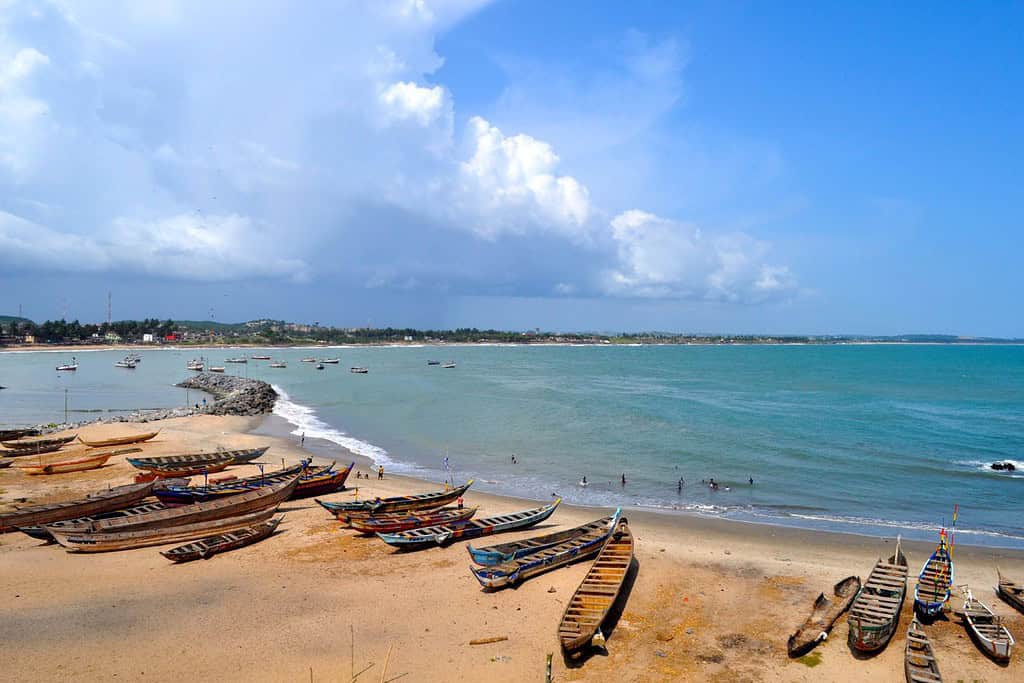
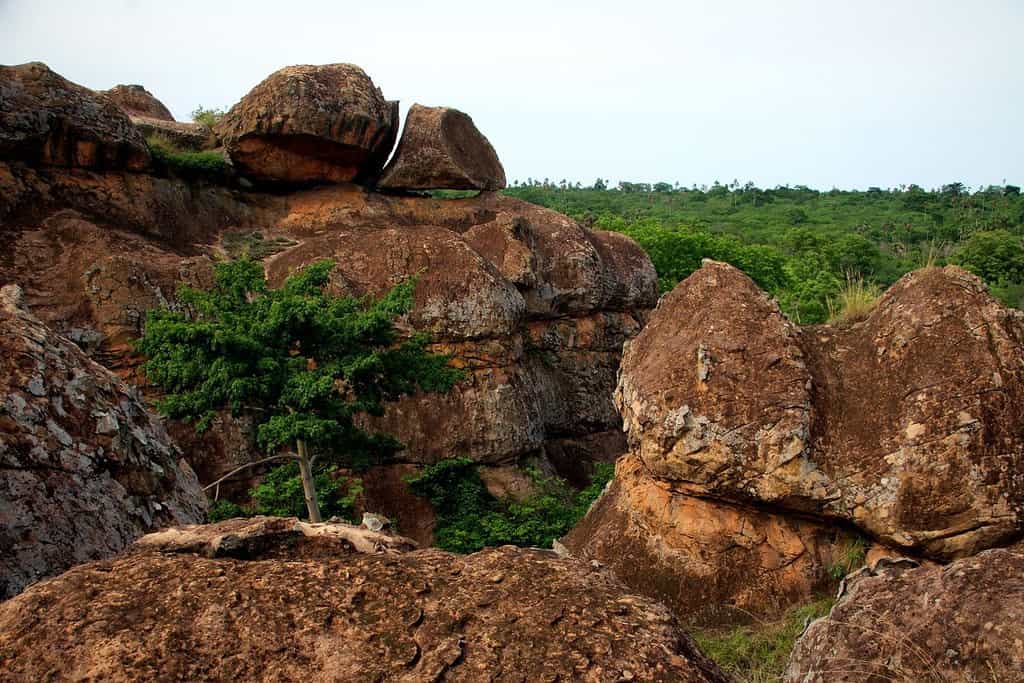
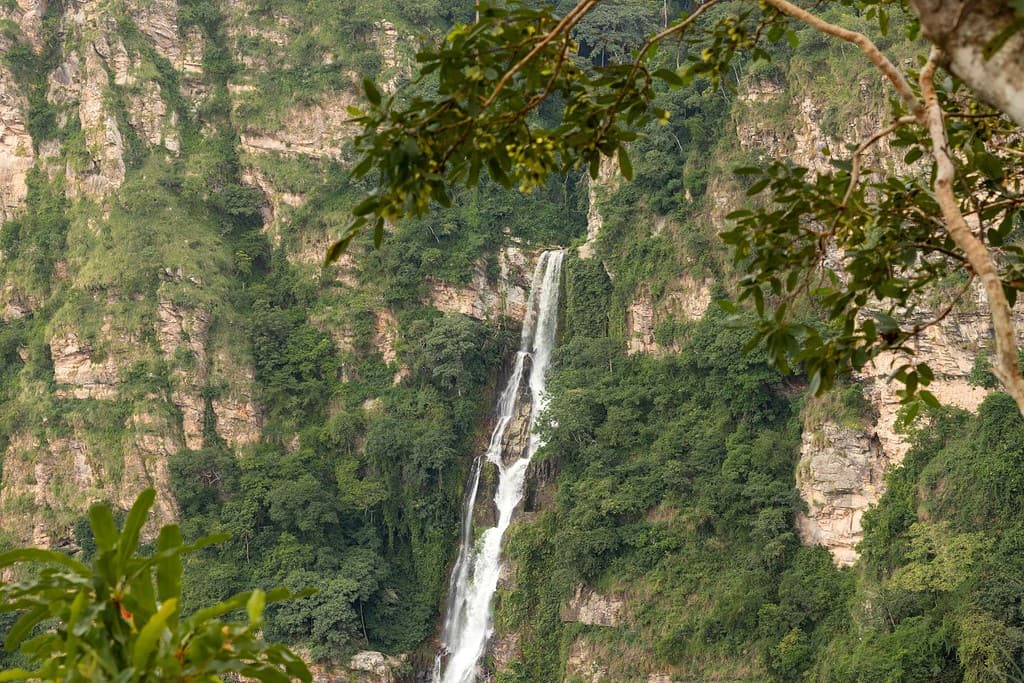
Top Geographic Features of Ghana
- Volta Lake: As one of the world’s largest artificial lakes, Volta Lake dominates the eastern part of Ghana, providing essential water resources for hydroelectric power, fishing, and transportation.
- Mole National Park: Located in northern Ghana, this park is the country’s largest wildlife refuge, hosting a variety of animal species, including elephants, leopards, and various birds.
- Ashanti Uplands: This region in central Ghana is characterized by its rolling hills and dense forests, influencing local climate patterns and serving as a source of timber.
- Pra River: One of Ghana’s major rivers, the Pra River, flows through the southern part of the country, playing a vital role in agriculture and providing water for many communities.
- Kakum National Park: Located in the central region, this rainforest reserve is famous for its canopy walkway, offering a unique perspective of the forest’s rich biodiversity.
- Mount Afadja (Afadjato): The highest peak solely in Ghana, Mount Afadja is an important landmark in the Volta Region and a popular hiking destination.
- Tano River: Flowing through the western part of Ghana, the Tano River is essential for local communities, agriculture, and fishing.
- Cape Coast Castle: Located on the southern coast, this historic fort played a significant role during the transatlantic slave trade and now stands as a UNESCO World Heritage site.
- Atewa Range: Situated in the southeastern part of Ghana, this upland area is rich in biodiversity and is a source of several rivers.
- Bia National Park: Located in the Western Region, this park is a biosphere reserve with lush forests and diverse wildlife, including the endangered forest elephant.
These geographic features play a crucial role in shaping Ghana’s landscape, climate, and cultural history, making them essential elements in defining the country’s geography.
Ghana Geography
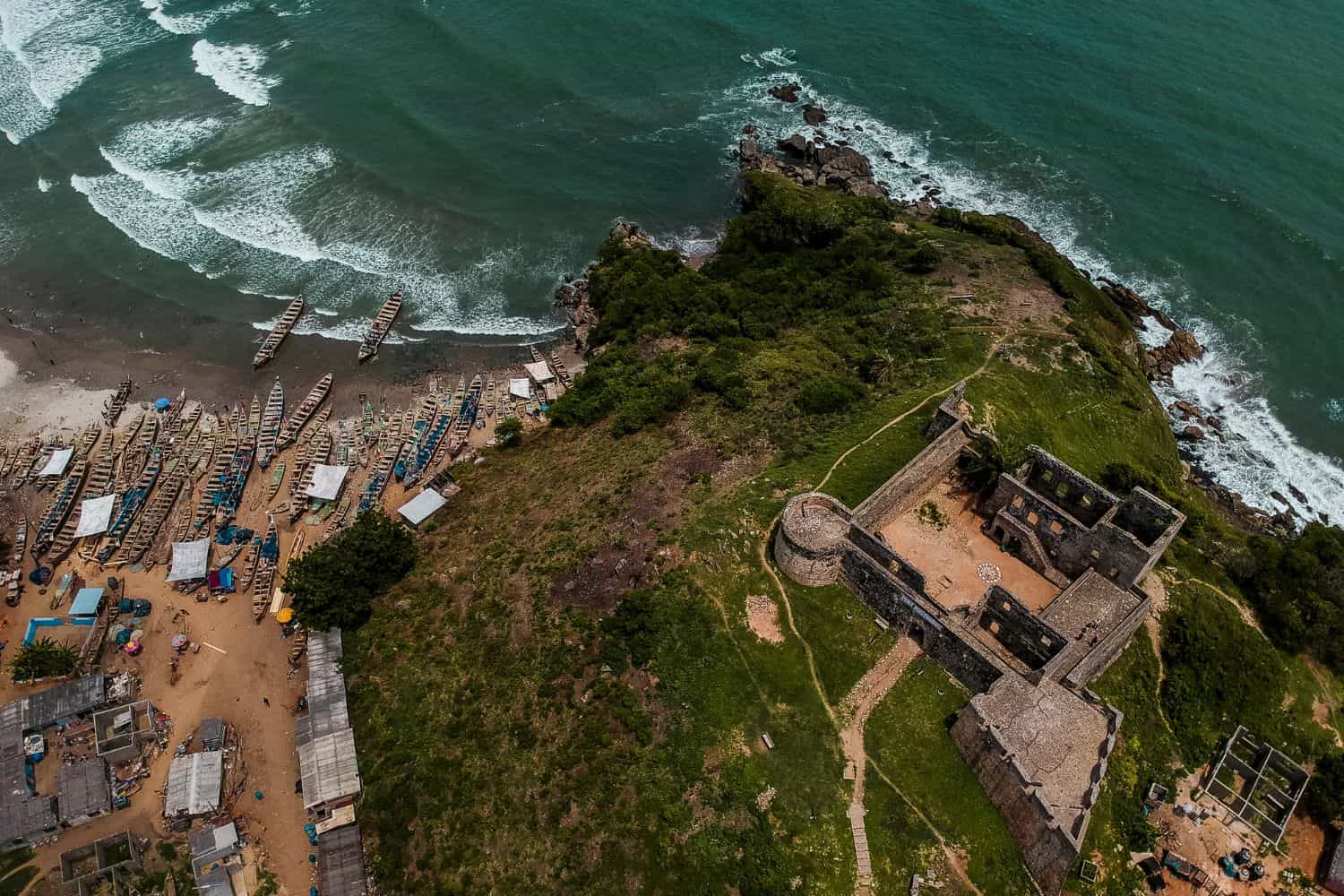
Exploring the Ghana National Geographic canvas reveals a captivating array of geographic features. From dense rainforests to golden coastlines and fertile plains, the country offers a mesmerizing tapestry of natural wonders.
- Mountain Ranges – The Crown of Diversity: Just as documentaries often feature impressive mountain ranges, Ghana is home to the Akwapim-Togo ranges. These verdant hills not only contribute to the country’s scenic beauty but also offer unique biodiversity and have shaped its cultural identity.
- Lakes – A Kaleidoscope of Colors: Ghana’s Lake Volta, one of the world’s largest artificial lakes, mirrors the picturesque landscapes captured in photographs. This expansive lake, surrounded by lush vegetation, reflects the region’s hydrological significance.
- Forests – The Green Lungs of the Land: Just as forest features highlight vast green landscapes, Ghana’s Kakum National Park showcases dense rainforests and rich biodiversity. This verdant region tells stories of conservation and the symbiotic relationship between humans and nature.
- Historical Sites – Unveiling the Past: Ghana’s historical sites, like the Ashanti traditional buildings and the Cape Coast Castle, evoke memories of explorations that uncover ancient civilizations. These landmarks stand as a testament to the country’s rich colonial and pre-colonial heritage.
- Ethnic Diversity – A Cultural Melting Pot: Similar to the National Geographic focuses on diverse cultures, Ghana is a tapestry of ethnic groups, including the Akan, Mole-Dagbon, Ewe, and Ga-Dangme. Each group contributes unique traditions, languages, and customs, creating a vibrant cultural mosaic.
- Wildlife – A Sanctuary for Nature: Ghana’s protected areas, such as the Mole National Park, mirror the coverage of wildlife conservation. These regions serve as crucial habitats for elephants, antelopes, and various bird species, preserving biodiversity in a lush environment.
- Geological Marvels – A Natural Showcase: The country’s geological wonders, like the Bosomtwi Crater Lake, showcase Ghana’s natural beauty amidst its varied landscapes. Such features demonstrate nature’s artistry and the significance of geological events.
- Coastal Exploration – Golden Shores and Beyond: Ghana’s extensive coastline beckons travelers, much like the allure of golden shores. This stretch of land offers a glimpse into vibrant fishing communities and the historical significance of the Atlantic slave trade.
Ghana geographic features are marked by the dominating presence of the Akwapim-Togo mountain ranges. These lush hills create a breathtaking backdrop for the nation’s diverse topography. The Volta River, vital for hydroelectric power and irrigation, winds its way through the heart of Ghana, enriching its lands.
Flowing gracefully through the Ghanaian terrain are the life-giving rivers of the Black Volta and the White Volta, essential for agriculture and sustenance. Additionally, the coastal plains and the northern savannah add to the country’s unique geography.
Ghana Geographic Location
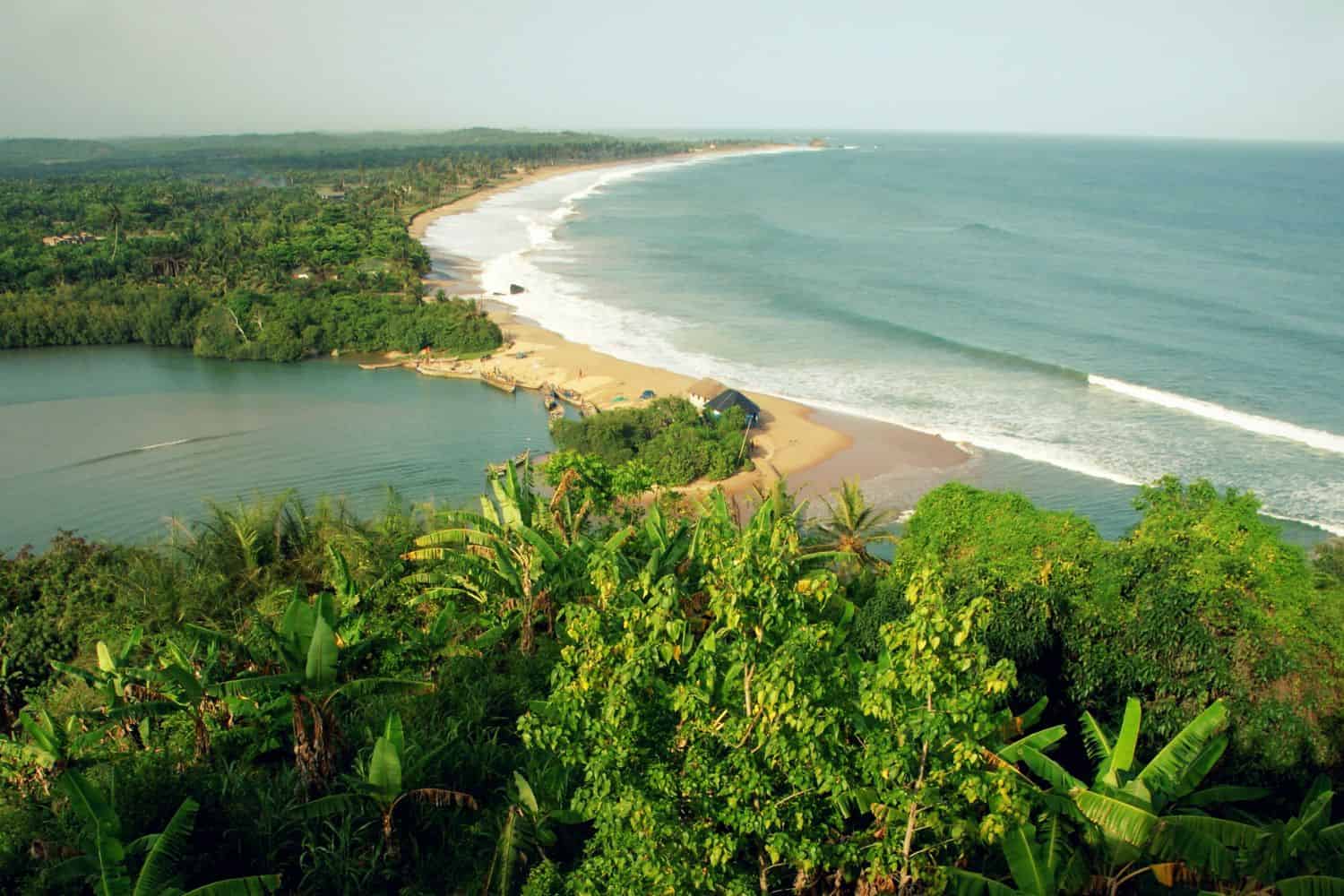
Ghana geographic location is very strategic, and its position has played a significant role throughout history. Located on the West African coast, the country has been a hub for trade, cultural exchange, and historical significance, especially during the transatlantic slave trade era.
Borders of Ghana
Ghana shares borders with three countries. Here is Ghana physical geography with the neighboring countries and the approximate total length of each border:
- Côte d’Ivoire: The border between Ghana and Côte d’Ivoire is approximately 720 kilometers long.
- Burkina Faso: The border between Ghana and Burkina Faso is approximately 549 kilometers long.
- Togo: The border between Ghana and Togo is approximately 1,098 kilometers long.
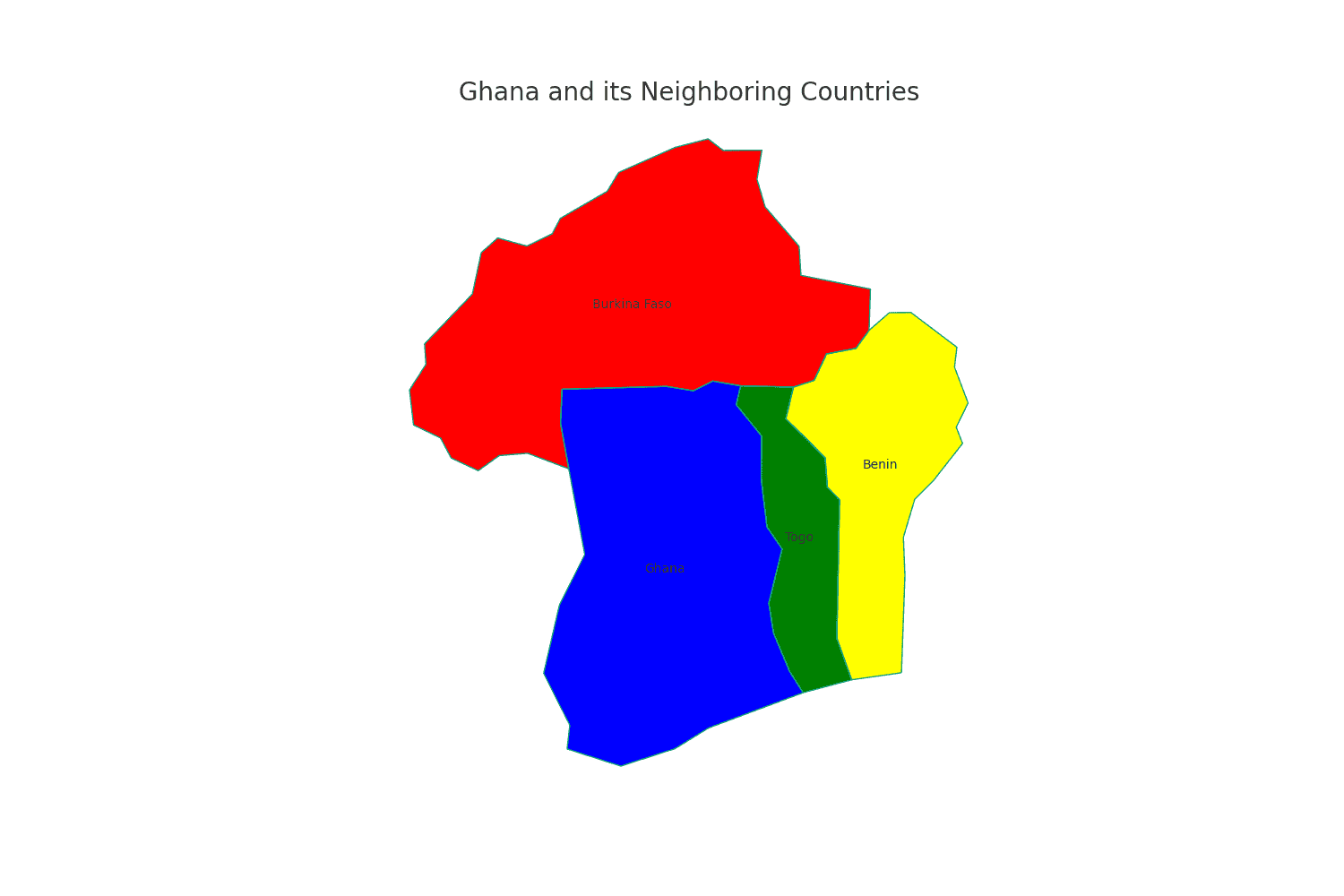
| Ghana Neighboring Country | Border Length (Approximate) |
|---|---|
| Côte d’Ivoire | 720 kilometers |
| Burkina Faso | 549 kilometers |
| Togo | 1,098 kilometers |
These international borders define Ghana’s connections to different regions and contribute to the country’s geopolitical significance as a crossroads between West Africa, providing access to coastal and landlocked neighbors.
Geography of Accra Ghana
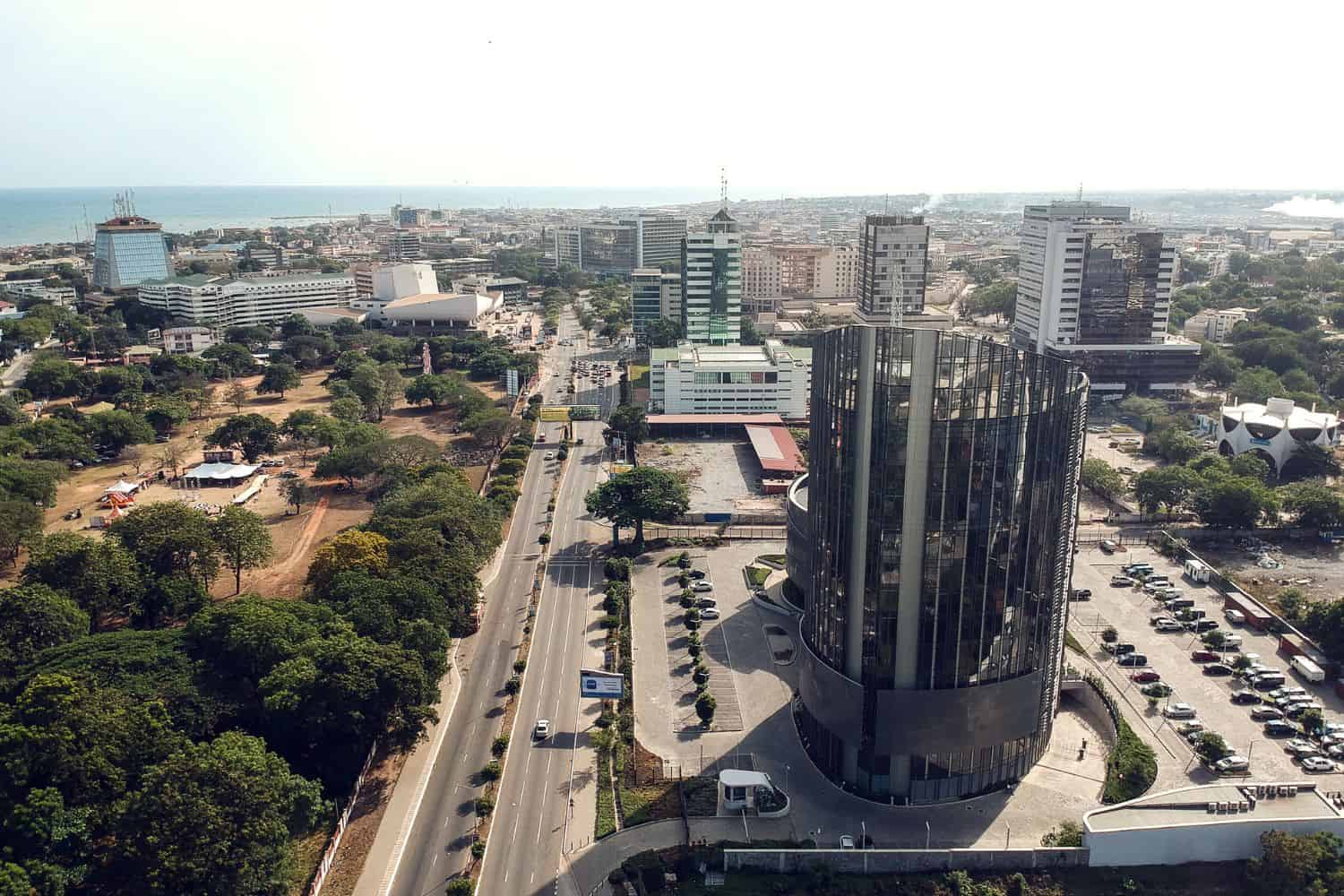
As the capital city of Ghana, Accra is a captivating microcosm of the country’s human geography. Here, various ethnic groups, including Akan, Ga-Dangme, Ewe, and Mole-Dagbon, coexist, contributing to the city’s vibrant cultural tapestry.
Accra, the capital city of Ghana
- City of Contrasts: Accra is known for its stark contrasts, where modern developments coexist with traditional neighborhoods, creating a unique blend of old and new.
- Accra Coastline: The Gulf of Guinea coastline borders the city, providing fishing opportunities and contributing to the city’s maritime activities.
- Accra’s Elevation: The city is situated at a relatively low elevation, near sea level, with coastal plains extending into the Atlantic Ocean.
- Green Spaces: Accra is home to several beautiful parks and green areas, including Kwame Nkrumah Mausoleum Park, offering a serene escape amidst the bustling city.
- Accra’s Historical Significance: With a history dating back centuries, Accra has witnessed various civilizations and played a pivotal role in regional trade routes.
- Diverse Architecture: The city showcases a diverse architectural heritage, reflecting influences from Akan, colonial, and modern styles.
- Coastal Climate: Accra experiences a tropical savanna climate, with distinct wet and dry seasons, making it a popular destination for tourists.
- Independence Arch: The Independence Arch is an iconic symbol of Ghana’s struggle for independence and is a prominent landmark in Accra.
- Accra’s Economy: The city serves as Ghana’s economic and cultural center, attracting people from all over the country seeking opportunities and education.
- Population Growth: Accra has experienced rapid population growth, with a significant influx of people from rural areas, leading to urbanization and infrastructure challenges.
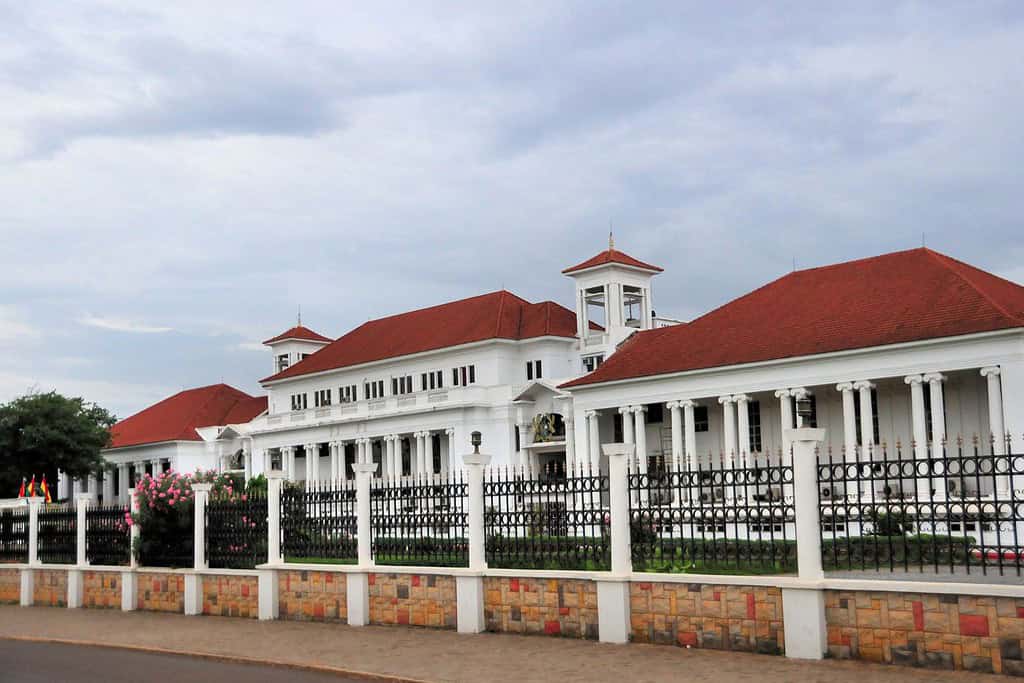
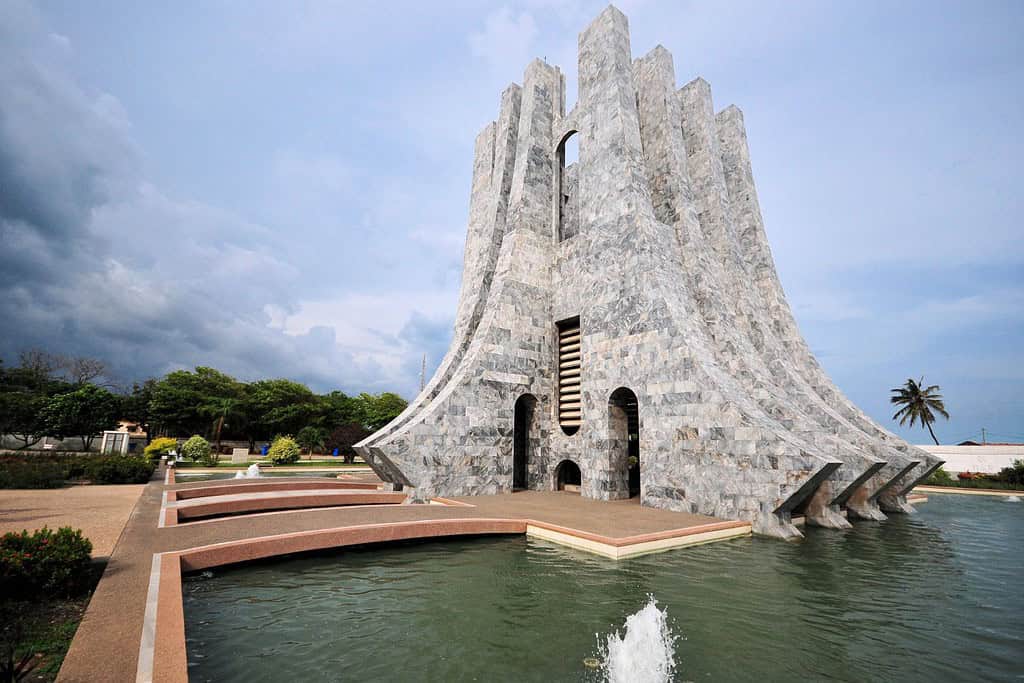
Historical Geographical Importance of Ghana
Throughout the ages, Ghana’s geographical significance has made it a sought-after stage for historical drama. As empires rose and fell, from the Ashanti Empire to European colonial powers and contemporary influences, Ghana’s geographic location played a crucial role in shaping the world’s history.
- Strategic Crossroads: Ghana’s location at the crossroads of West Africa, facilitating trade, cultural exchange, and historical events, has made it a strategic point for centuries.
- Ancient Trade Routes: Ghana was a hub along ancient trade routes, such as the Trans-Saharan trade routes and coastal trade with European powers, connecting different parts of the world and enabling the exchange of goods, ideas, and cultures.
- European Colonialism: During the colonial era, Ghana was a significant part of the European scramble for Africa, with various colonial powers vying for control and resources.
- Influence of Ashanti Empire: The Ashanti Empire, with its rich culture and history, had a profound impact on Ghana’s development and identity.
- Trans-Atlantic Slave Trade: Ghana’s coastal regions played a pivotal role in the trans-Atlantic slave trade, shaping the destinies of countless individuals and influencing the course of history.
- Independence Movement: Ghana’s struggle for independence in the mid-20th century marked a turning point in the decolonization of Africa and inspired liberation movements across the continent.
- Contemporary Influence: Today, Ghana’s geographic location and stable political climate continue to make it a significant player in regional and global affairs.
The geographical position of Ghana is a mosaic of natural beauty and historical importance. With its diverse landscapes, rich cultural heritage, and pivotal role in historical events, this West African nation continues to capture the world’s imagination. Despite challenges, Ghana remains an appealing destination for those seeking to explore nature’s wonders and historical intrigue.
In conclusion, Ghana’s geographical significance has made it a stage for historical events, with various empires, colonial powers, and contemporary influences shaping the nation’s history. Its strategic position continues to play a pivotal role in the region’s history and global geopolitics today.
More About Ghana
[the-post-grid id=”50361″ title=”Ghana Main page”]
